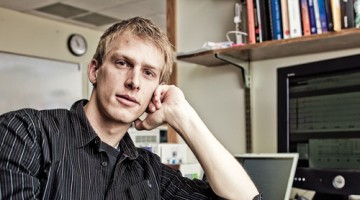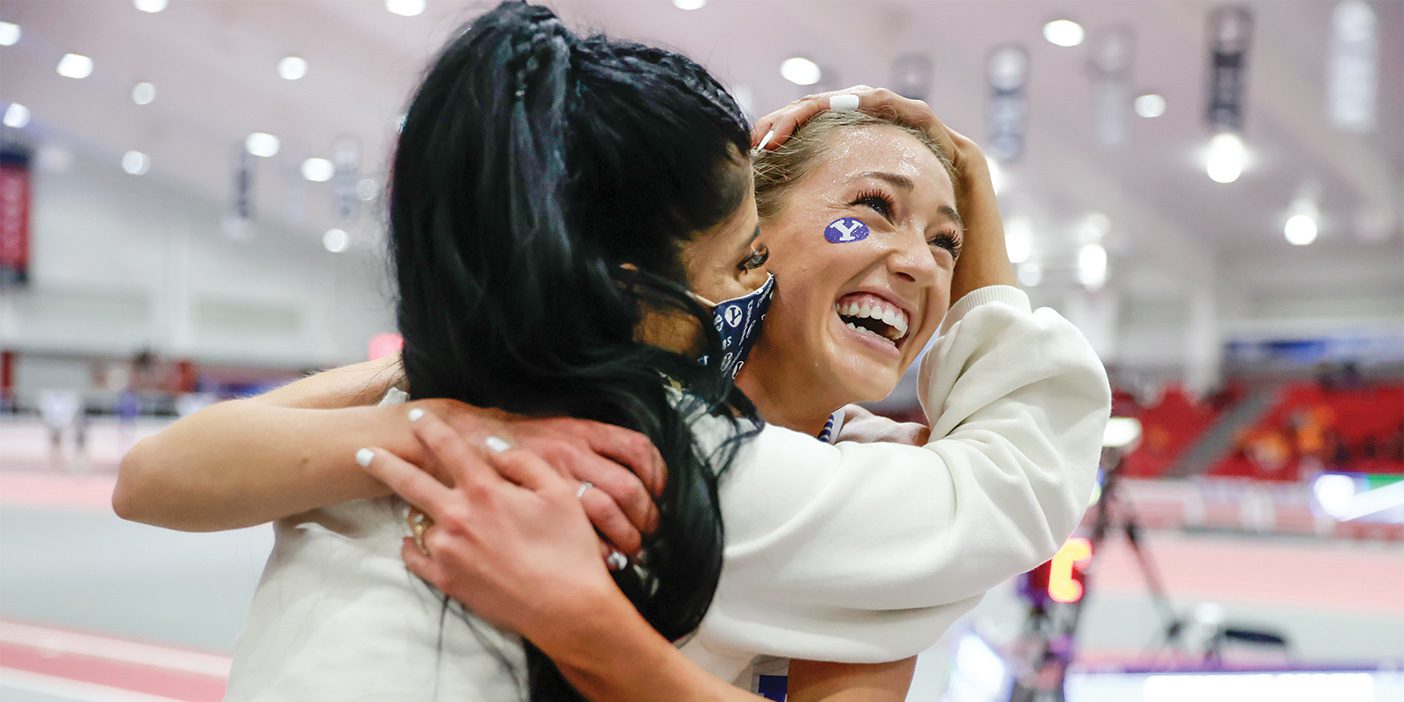By Lisa Ann Jackson
Sort of like the librarian version of Indiana Jones, K. Haybron Adams, assistant photo archivist at the Harold B. Lee Library, digs through special collections, card catalogs, and archives to find beleaguered researchers’ holy grails–elusive source materials, additional information, even complete bibliographies.
Requests for information from BYU’s library come from around the globe and usually end up in Adams’ dimly lit office (his sixth since library construction began) where he begins his crusades to unearth information in the library system. And while his quests to answer these queries hardly make the world safe for democracy, his diligence makes a difference for the individuals seeking the information, and it is significant that people from around the world are looking to BYU’s library system–some 4.5 million volumes strong–for help.
“BYU’s library staff and faculty are known for the good work they do–for the quality work they do,” Adams says. “And because of that, I will get these requests asking for whatever it may be.”
Requests (usually coming via e-mail) range from someone in Germany asking for a bibliography of BYU’s holdings on a late 19th century Japanese author to someone in England requesting a hymn published in an 18th century hymnal to someone in Salt Lake City asking who said, “If you build it, he will come,” in the movie Field of Dreams.
“When I turn on my computer in the morning and check my e-mail, I have no idea where things are going to come from,” Adams says. “Who would ever think of BYU if you were in Berlin and you wanted information on
a Japanese author?”
Most learn of BYU’s holdings through RLIN (Research Libraries Information Network), a database that lists the holdings of about 50 of the world’s largest libraries. BYU’s inclusion on the database is in the company of such libraries as the Library of Congress, the British Library, and the libraries at Harvard, Stanford, and Berkeley. Through RLIN, researchers can access BYU catalog information. Once they know what BYU has, they can contact BYU to request information.
“We have a lot of information on a lot of things,” says Adams–jestingly called the “fount of all knowledge” by a co-worker because Adams seems to know just where to find all that information when he needs it, right down to the national anthem of a small African country, a request that crossed his desk last year. “And because of what we do–the quality of our work–we are asked for a lot of material.”
With a student research assistant to help with much of the legwork, Adams’ searches unearth all kinds of interesting information. One request sent Adams on the trail of a Mennonite missionary who proselyted in Utah around the turn of the century. A professor at a Mennonite college in Kansas was looking for details to flesh out information he already had about this missionary. Adams found that the missionary changed his name several times, was twice sealed in the Manti LDS Temple, (although Adams never found an LDS baptismal record), received a patriarchal blessing, started a cult based on reincarnation, and left Utah bound for Arizona, Oklahoma, and eventually Montana.
Adams is happy to offer the expertise and knowledge he has developed over years of working within BYU’s library system, but he admits there are some requests to which he simply has to say, “I don’t know.” Recently, someone wanted to know to what a line in Teachings of the Prophet Joseph Smith referred. But Adams was stumped.
“It says, ‘I’ll hunt after Hades like Pat did for the woodchuck,'” Adams says. “We have tried and tried to figure out what that line is supposed to mean, but we don’t have a clue. Who is Pat? What woodchuck? Why did Pat want a woodchuck?”
In most cases, Adams comes up with at least some information and leaves the rest in the hands of the researcher. Two boys in California working on a history fair project wrote BYU’s library seeking information about a particular baseball player who played in a world series in the 1920s. Adams found that only one member of this player’s team was still living. He passed along the team member’s address and phone number with some other information about the team and later received word that the boys had gotten the information they wanted.
“They phoned the guy and talked to him about the last game in a world series in the 1920s. They were just ecstatic about what they found out, and the player was excited to talk to a couple of kids who really wanted to know about it,” Adams says. “It’s those kinds of things that really make you feel like you are worth something–when you can help even a couple of kids. It makes it all worth it.”
This article first appeared in the Spring/Summer 1997 issue of International, a newsletter published by BYU’s David M. Kennedy Center for International studies.









